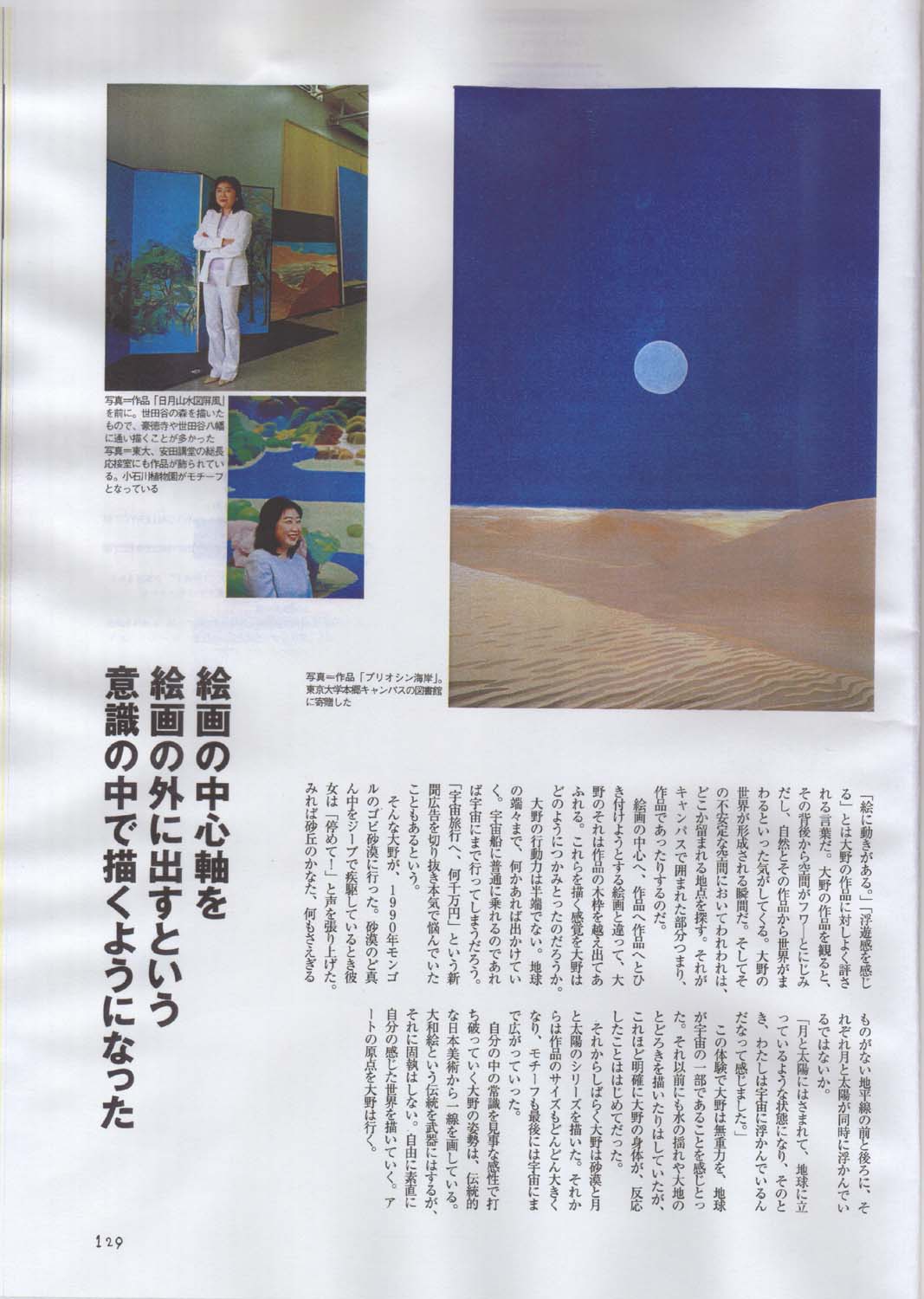

Placing the axis of the picture outside the painting, that's what I consciously think of when I paint.
"The paintings has motion," and "A sense of floating is there," are words often used to describe Hiroko Ohno's works. When we look at a painting by Ohno, we feel space begin to gently unfold behind it, as if the world is turning around the picture. In that moment, Ohno's world is created. And in that unstable space, we look for some point to alight. That point is often the area enclosed in the canvas, the work itself.
Unlike paintings that invite the viewer further and further into the center of the picture, Ohno's works flow outward beyond the wooden frame of the canvas. How did Ohno achieve the feeling of painting such works?
Ohno takes no halfway measures in her activities. She travels to every corner of the earth whenever she has the opportunity. If she could hop on a spaceship, she would probably travel even to outer space. Once she saw a newspaper advertisement for space travel costing tens of millions of yen. She clipped it and had seriously considered going to space.
Ohno, a wanderer, traveled to the Gobi Desert in 1990. Driving in a jeep across the of the desert, Ohno cried, "Stop the car!" Beyond the dunes, above the horizon spreading before and behind her, the sun and the moon floated in the same sky.
"I was standing on the earth between the sun and the moon, and it was then I felt I was floating in space," says Ohno.
Through this experience, Ohno discovered the sense of zero gravity and came to realization that the earth was indeed part of the universe. Until then, she had painted the quivering of water and the rumbling of the earth, but it was the first time she experienced such an intense reaction in her body.
For a while after, Ohno painted a series of the desert, sun, and moon. From then on, her works increased in size, and her motifs ultimately expanded toward the universe.
Ohno's attitude to break through her own common sense with her amazing sensitivity clearly exceeds the limits of traditional Japanese art. She makes use of the traditions of yamato-e , but she does not adhere to it. Freely and honestly, she paints the world as she perceives. Ohno travels in the roots of art.
Photo: Ohno in front of Sun and Moon Landscape Screen, a painting of a
forest in Setagaya. She has painted many works of Gotokuji Temple and Setagaya
Hachiman Shrine.
Photo: Ohno in front of Sun and Moon Landscape Screen, a painting of a
forest in Setagaya. She has painted many works of Gotokuji Temple and Setagaya
Hachiman Shrine.
Photo: Purioshin Beach, donated to Tokyo University Campus Library.